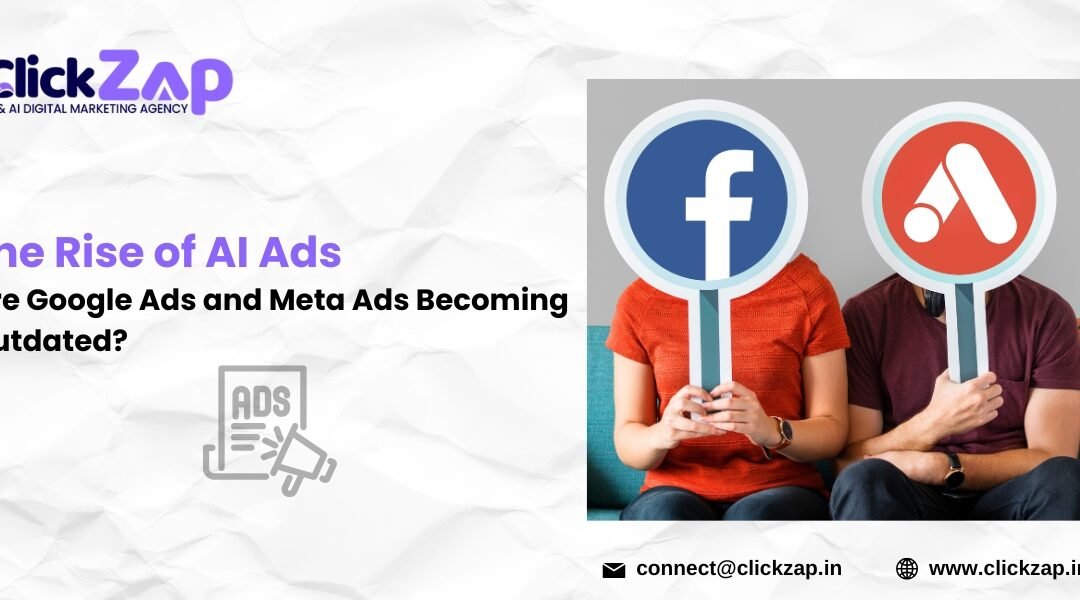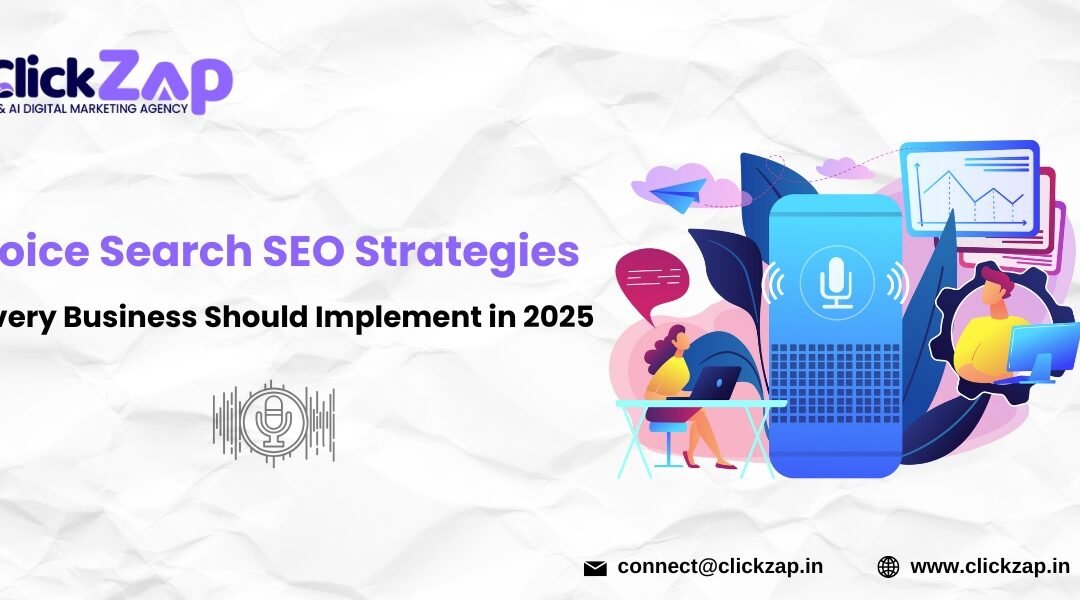Search engines have come a long way since the early days of keyword stuffing and backlink chasing. As artificial intelligence reshapes the digital landscape, two new forces are redefining how websites are discovered online AEO (Answer Engine Optimization) and GEO (Generative Engine Optimization).
While businesses have long relied on search engine optimization to rank and drive traffic, the question in 2025 is clear: Is that still enough?
In this comprehensive guide, we’ll explore Traditional SEO vs AEO and GEO, understand their differences, and uncover why adapting to these new technologies is critical for future success.
At ClickZap IT, we’ve witnessed firsthand how search behavior has evolved and how brands that stay ahead of the curve thrive while others struggle to stay visible.
Understanding Traditional SEO vs AEO and GEO
The digital marketing landscape is rapidly evolving, and understanding Traditional SEO vs AEO and GEO has become crucial for businesses aiming to stay visible online. While traditional SEO focuses on optimizing websites with keywords, backlinks, and on-page techniques, AEO search optimization strategies emphasize providing precise answers to user queries perfect for voice and AI-driven searches. Meanwhile, GEO targeting in digital marketing adapts content for generative AI tools that summarize or produce responses directly. At ClickZap IT, we help brands merge these approaches by integrating the evolution of search engine optimization, the future of SEO techniques, and the growing influence of artificial intelligence in search ranking, ensuring your website remains relevant and competitive in this next era of digital discovery.
1. The Evolution of Search Engine Optimization
Over the past two decades, the evolution of search engine optimization has been nothing short of revolutionary.
From early 2000s link farms to Google’s RankBrain and BERT updates, SEO has consistently evolved to prioritize quality, relevance, and user intent.
But now, in 2025, the biggest leap forward is the integration of artificial intelligence in search ranking. Search engines no longer just crawl and index they think.
With AI understanding semantics, tone, and user behavior, SEO professionals must adapt their approach. The future of SEO techniques lies in creating intelligent, answer-focused content that aligns with human conversation.
At ClickZap IT, we’ve integrated AI-powered tools to understand how search intent has shifted. Instead of just ranking for keywords, we optimize for clarity, usefulness, and trustworthiness all essential in today’s era of AEO and GEO.
2. What Is AEO (Answer Engine Optimization)?
Answer Engine Optimization (AEO) is the process of optimizing content to ensure it gets selected as a direct response to user queries in AI-driven environments like ChatGPT, Perplexity, or Google’s SGE (Search Generative Experience).
In the context of Traditional SEO vs AEO and GEO, AEO is the next evolution of visibility. Instead of optimizing for the “10 blue links” on a Google page, you’re optimizing for a single, spoken, or AI-generated answer.
Key AEO search optimization strategies include:
- Structuring content in question-and-answer formats
- Using schema markup for clarity
- Creating concise, authoritative, and factual responses
- Prioritizing conversational tone and semantic search
- Leveraging long-tail and intent-driven keywords
At ClickZap IT, we help clients create “answer-ready” content that fits naturally into AI-generated responses ensuring their brand appears where users are asking, not just searching.
3. What Is GEO (Generative Engine Optimization)?
While AEO focuses on structured answers, GEO targeting in digital marketing takes it a step further.
Generative Engine Optimization (GEO) is about optimizing content for AI-powered generative search models engines that create summarized, synthesized answers from multiple sources.
GEO ensures that your content is selected, cited, or referenced by these AI systems, giving your brand exposure in AI-generated results.
ClickZap IT uses GEO strategies that involve:
- Creating context-rich, authoritative long-form content
- Using structured data for machine understanding
- Optimizing for relevance, tone, and factual accuracy
- Building credibility through expertise and authenticity
In the debate of Traditional SEO vs AEO and GEO, GEO is the cutting-edge evolution where AI engines become both reader and recommender.

4. Why Traditional SEO Still Matters But Needs Evolution
Despite the rapid rise of AEO and GEO, Traditional SEO is far from dead. It still provides the foundational structure that search algorithms rely on.
However, the difference in Traditional SEO vs AEO and GEO lies in adaptability. Traditional SEO focuses on:
- Keywords and backlinks
- Metadata and technical structure
- Mobile and speed optimization
But modern search requires more than that.
To compete in SEO trends 2025, your strategy must evolve to include search experience optimization benefits, semantic understanding, and AI adaptability.
At ClickZap IT, we see Traditional SEO as the roots but AEO and GEO as the branches that reach new audiences.
5. The Impact of AEO on Website Traffic and Rankings
The impact of AEO on website traffic has been transformative.
When done correctly, AEO improves visibility not just in Google results, but across AI-driven platforms that deliver instant answers.
However, there’s a paradox while visibility increases, click-through rates might decrease because users get answers directly in the AI interface.
That’s why ClickZap IT focuses on building AEO search optimization strategies that balance visibility with value. We optimize for featured snippets, knowledge panels, and AI citations ensuring brands are not only mentioned but remembered.
In Traditional SEO vs AEO and GEO, AEO is redefining what visibility truly means in the age of automation.
6. GEO Targeting in Digital Marketing: Personalization Meets AI
GEO targeting in digital marketing combines location intelligence with generative AI to create hyper-personalized experiences.
Imagine asking, “What’s the best digital marketing agency near me?” and having an AI engine not only list options but recommend ClickZap IT based on your preferences, reviews, and proximity.
That’s the power of GEO.
It leverages:
- Local SEO and AI-driven personalization
- Data on language, region, and search behavior
- Predictive analytics to tailor search results
For businesses, mastering Local SEO vs global SEO trends through GEO ensures your brand is discovered by the right audience, in the right place, at the right time.
7. Local SEO vs Global SEO Trends in the AEO-GEO Era
The debate around Local SEO vs global SEO trends is intensifying as AEO and GEO evolve.
Local businesses must optimize for voice and proximity, while global brands must focus on authority and multilingual accessibility.
In Traditional SEO vs AEO and GEO, the approach changes based on the market:
- Local SEO emphasizes map listings, reviews, and localized content.
- Global SEO emphasizes translation, cultural adaptation, and technical optimization.
At ClickZap IT, we help clients strike that balance leveraging GEO targeting in digital marketing to drive both local visibility and global reach.

8. The Role of Artificial Intelligence in Search Ranking
The integration of artificial intelligence in search ranking has changed the SEO playbook forever.
AI algorithms now analyze not just what content says, but how it says it considering tone, sentiment, and user engagement.
Modern engines like Google SGE, Bing Copilot, and ChatGPT use machine learning to evaluate quality and trustworthiness, prioritizing content that delivers user satisfaction.
ClickZap IT incorporates AI-driven SEO tools that analyze behavior patterns, predict content performance, and adapt keyword strategies in real time.
In the landscape of Traditional SEO vs AEO and GEO, AI is both the driver and the destination shaping every aspect of search visibility.
9. The Future of SEO Techniques: AEO + GEO Integration
The future of SEO techniques is not about choosing between Traditional SEO vs AEO and GEO, but integrating all three.
Tomorrow’s successful strategies will include:
- SEO for discoverability
- AEO for conversational relevance
- GEO for contextual personalization
This trifecta ensures that your brand doesn’t just rank, it resonates.
At ClickZap IT, we combine these approaches into what we call Search Harmony Marketing, a balanced strategy that blends AI, data, and human insight to keep your business visible across every channel.
10. Modern SEO Best Practices for the AEO-GEO Era
To stay relevant, here are the modern SEO best practices you need to adopt:
- Focus on intent-driven content – Understand what your audience truly seeks.
- Use structured data – Schema markup helps AI understand context.
- Create conversational content – Write for how people ask, not just how they type.
- Optimize for voice and visual search – Adapt for AI-powered devices and assistants.
- Measure engagement, not just traffic – In AEO and GEO, attention equals authority.
At ClickZap IT, our SEO framework blends Traditional SEO vs AEO and GEO into one cohesive system ensuring that brands grow sustainably in the AI-powered search age.
11. Search Experience Optimization Benefits: The Human Side of SEO
While algorithms evolve, human experience remains at the core of success.
That’s why search experience optimization benefits or SXO are now essential.
SXO combines UX (User Experience) and SEO to ensure that once users discover your content, they stay, explore, and convert.
By focusing on readability, design, and engagement, you’re not just pleasing algorithms, you’re earning loyalty.
At ClickZap IT, we emphasize this human element in every campaign. Because even in the age of AI, empathy drives engagement.
12. SEO Trends 2025: What’s Next?
The SEO trends 2025 highlight a clear shift toward intelligent, interactive, and intent-based search experiences.
Expect to see:
- Growth in AEO search optimization strategies
- Expansion of GEO targeting in digital marketing tools
- Widespread adoption of AI in content creation
- Enhanced importance of search experience optimization benefits
- Continued convergence of Traditional SEO vs AEO and GEO
At ClickZap IT, we believe the future belongs to brands that blend innovation with integrity creating content that informs, inspires, and interacts.
Frequently Asked Questions (FAQs)
1. What’s the difference between Traditional SEO vs AEO and GEO?
A: Traditional SEO focuses on ranking in search results, while AEO optimizes for direct answers and GEO ensures visibility in AI-generated responses. Together, they redefine the future of search.
2. How does AEO impact website traffic?
A: The impact of AEO on website traffic is significant; it increases visibility in voice and AI searches, though direct clicks may decrease as users get answers instantly.
3. What is GEO targeting in digital marketing?
A: GEO targeting in digital marketing personalizes search results based on location, behavior, and context making it vital for local and global brand visibility.
4. Is traditional SEO still relevant in 2025?
A: Yes, but only when integrated with AEO search optimization strategies and GEO targeting to adapt to AI-driven search evolution.
5. How can ClickZap IT help with AEO and GEO?
A: ClickZap IT specializes in modern SEO solutions that blend Traditional SEO vs AEO and GEO, using AI tools, data-driven insights, and content innovation to future-proof your online presence.
Also Read: Top Content Marketing Trends 2025 Every Business Should Know – ClickZap IT
Conclusion: Evolve or Be Invisible
The era of Traditional SEO vs AEO and GEO isn’t about competition it’s about collaboration.
Traditional SEO built the foundation, AEO brought intelligence, and GEO added personalization. Together, they form the new ecosystem of discoverability.
At ClickZap IT, we help businesses evolve not just to rank, but to resonate. The search world is changing fast, and the brands that adapt today will lead tomorrow.
So, is traditional SEO still enough?
Not anymore.
The future belongs to those who optimize not just for algorithms but for answers, experiences, and empathy.
Follow us on:
📘 Facebook || 📸 Instagram || 💼 LinkedIn || ✖️ X-Twitter || 📌 Pinterest





0 Comments